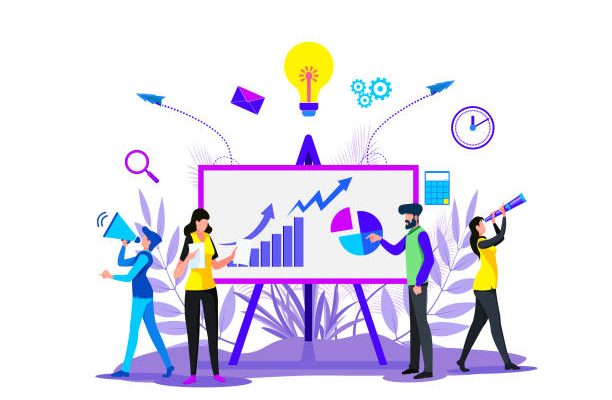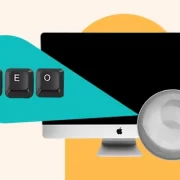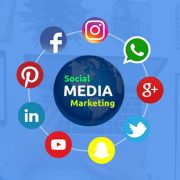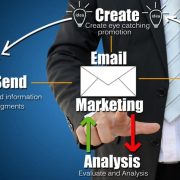Marketing through an economic downturn
While the US still isn’t technically in a recession, according to economists, brands should consider developing recession-specific marketing strategies if 2023’s first-quarter slump persists into Q2.2.
For companies founded after the 2008 recession, developing marketing strategies during an economic downturn might seem like a risky proposition. However, data from the two most recent American recessions indicates that maintaining (or even enhancing) marketing efforts during a recession can produce long-term gains:3
A study examining 600 brands during the 1980 to 1985 recession revealed that:
Brands that maintained or slightly increased their marketing efforts were rewarded with significantly higher sales after economic recovery than companies that completely dashed their marketing budget.
Businesses that opted for aggressive marketing tactics during the recession secured 256% higher sales in post-recession years than brands that stopped advertising altogether during the recession.
An analysis of marketing trends surrounding the 2008 recession discovered that 60% of the brands that completely paused their marketing efforts saw a 24% decrease in brand use and a 28% decrease in brand image.
If you want to become a recession-proof business, maintaining your B2B marketing strategy would be wise despite 2023’s relatively bleak economic predictions.
Centering value in campaigns
As B2B purchasing teams become more heavily saturated with Millennials and Gen-Z, their processes for choosing vendors and service providers become more value-focused.1 Current reports suggest that in 2023, purchasing teams want unique value propositions to be at the forefront of sales conversations.
So, a marketing campaign that centers value has already taken hold in 2023, and in light of recession-era conservative spending trends, this focus may continue in B2B advertising in Q2 and Q3.
Brands looking to showcase value in their advertising efforts might consider the following:
Emphasizing the value of their services by calculating how much their existing customers stand to earn or save when they purchase a product or service.
Developing a pricing model that highlights customers’ value in relation to cost (like a tiered pricing strategy).
Creating and publishing case studies that demonstrate how their existing customers have saved or earned after purchasing a product or service.
Staying educated about new technology
B2B companies will continue to encounter new marketing technologies throughout 2023. Whether brands choose to adopt them into their practices is entirely up to them, but understanding what each B2B marketing trend is and how it stands to change the current ways of things is essential.
For example, recent technological advances in marketing may:
Leverage AI for increased content volume and production efficiency.
Demand increased diversification of digital assets designed for specific platforms.
Affirm the need for human intelligence and collaboration in marketing conversations.
Simply put today’s brands should maintain eye contact with emerging technologies to develop marketing strategies that are as impactful and cost-effective as possible. Let’s dive deeper into the technological demands for a marketing campaign in 2023.
Diversifying platforms and content
As newer social media platforms (like TikTok) continue to grow, brands must evolve their B2B content marketing to keep up. But that doesn’t mean making content for every possible platform. In 2023, social media users will be paying particular attention to marketing efforts that embrace the varying contexts of different platforms to create content that resonates with users.
To demonstrate what users are looking for when they turn to social media in 2023, let’s compare two popular social media marketing platforms: Instagram and TikTok.
Instagram users are increasingly engaged with content posted on Stories. In fact, 62% of users are more interested in a B2B business after engaging with its Stories content on the platform.4
TikTok users are primarily using the platform for a daily dose of joy or community-building. As such, they expect a B2B brand on the platform to produce advertising material that serves these primary functions.5
In 2023, content diversification doesn’t just describe developing a presence on every social media platform. It also means that brands must develop the kind of content that users are looking for on a specific platform.
Combining AI and human Intelligence for marketing analytics
While social media platforms are expanding, so are the tools marketers can use to create digital marketing strategies. In 2023, highly effective digital marketing strategy software combines two powerful tactics to build optimized campaigns:
AI-enabled analytics and reporting
Human expertise
At this stage of the game, it’s unlikely that professional marketers in 2023 will be developing strategies without some help from AI.6 But since AI tools for marketing aren’t perfect, brands that want to optimize their efforts without sacrificing the inherently human elements of marketing are still leaning on professional, human expertise. That might look like this:
Using AI to compile data but relying on human data analysis
Compiling AI-generated marketing reports that strategists use to tweak campaigns
Brainstorming content ideas using AI tools but vetting them with human focus groups
Integrating AI content with care
The critical balance between human and AI tools applies to both your B2B marketing strategy and your B2B content creation in 2023. Consider an AI that’s been experiencing a meteoric rise over the last twelve months with the rise of AI-powered content generators.
While using verbatim written content produced by these generators can trigger everything from plagiarism detectors to Google spam filters, marketers can choose to use a combination of AI and human content generation without sacrificing integrity.7
Investing in brand-building
Perhaps drawing inspiration from campaigns during the 2008 recession, B2B companies have emphasized continued brand-building in 2023–developing customer loyalty by investing in:
Credible brand voices
Brand personas that consumers can easily identify with
Product and brand awareness throughout the market
It’s important to note that brand-building efforts in 2023 are primarily centered around authenticity and creativity–characteristics that attract customers and drive organic growth.8
Emphasizing demand generation over lead generation
One organic marketing effort that’s continuing to play a role in 2023 B2B marketing strategies is an emphasis on demand generation over lead generation.9
Demand generation describes tactics that get consumers excited about a product or service while
Lead generation involves collecting information from high-intent potential customers for vetting, targeting marketing efforts, and other follow-up tactics.
While focusing on demand generation might not sound like a brand-building effort at first, tactics that develop buzz about a business could increase consumers’ association between that business and a marketing trend–and ultimately improve a company’s brand awareness.




















Comments